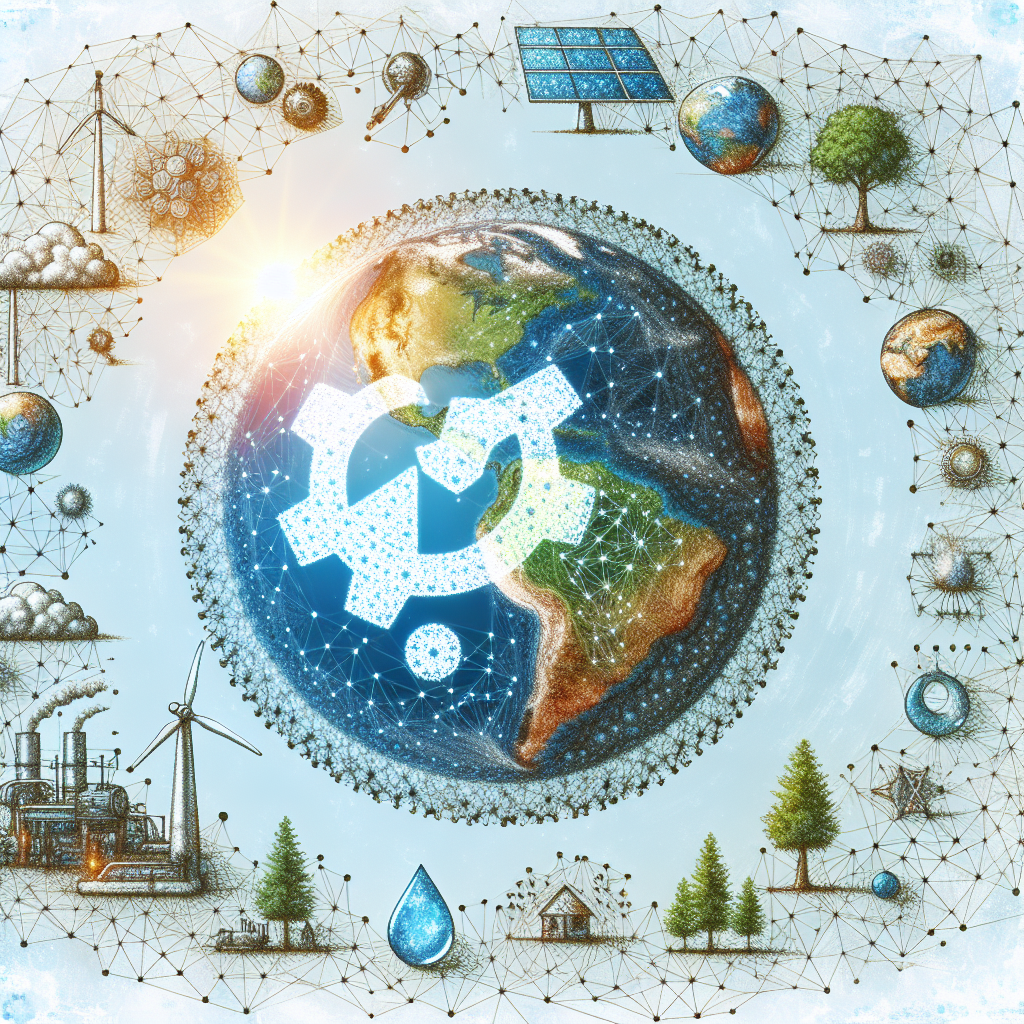Artificial intelligence (AI) software is a powerful tool that can be used to combat climate change and mitigate its impacts. With the increasing global concern over the effects of climate change, AI software offers a promising solution to help tackle this pressing issue. From predicting extreme weather events to optimizing energy consumption, AI software can play a crucial role in helping societies adapt to and mitigate the impacts of climate change.
One of the key ways in which AI software can help combat climate change is through its ability to analyze and interpret large amounts of data. Climate change is a complex issue that involves a wide range of factors, including temperature changes, sea level rise, extreme weather events, and more. AI software can process massive amounts of data from various sources, such as satellites, weather stations, and sensors, to provide valuable insights into the changing climate patterns. By analyzing this data, AI software can help scientists and policymakers better understand the causes and effects of climate change, and develop effective strategies to mitigate its impacts.
AI software can also be used to predict and forecast extreme weather events, such as hurricanes, floods, and droughts. By analyzing historical weather data and using advanced algorithms, AI software can generate accurate predictions of when and where these events are likely to occur. This can help communities and governments prepare for and respond to these events, reducing the risks and damages associated with extreme weather.
Another important way in which AI software can help combat climate change is through its ability to optimize energy consumption and reduce greenhouse gas emissions. By analyzing data on energy usage and efficiency, AI software can identify areas where energy consumption can be reduced and recommend strategies to improve efficiency. For example, AI software can optimize the operation of smart grids, improve the efficiency of renewable energy systems, and reduce energy waste in buildings and transportation systems. By helping to reduce energy consumption and emissions, AI software can play a crucial role in reducing the impact of climate change.
AI software can also be used to improve climate change adaptation strategies. By analyzing data on climate change impacts and vulnerabilities, AI software can help communities and governments identify areas that are most at risk and develop effective adaptation measures. For example, AI software can help design resilient infrastructure, develop early warning systems for extreme weather events, and optimize land use planning to reduce the risks of flooding and erosion. By providing valuable insights and recommendations, AI software can help societies adapt to the changing climate and reduce their vulnerability to its impacts.
In addition to these uses, AI software can also help monitor and enforce environmental regulations. By analyzing data on pollution levels, deforestation rates, and other environmental indicators, AI software can help identify violations of environmental laws and regulations. This can help governments and regulatory agencies enforce compliance with environmental standards and hold polluters accountable for their actions. By promoting transparency and accountability, AI software can help ensure that environmental regulations are effectively implemented and enforced, leading to better protection of the environment and mitigation of climate change.
Despite its promising potential, AI software also poses challenges and concerns when it comes to climate change mitigation. One of the key challenges is the need for accurate and reliable data to train AI algorithms. Climate change is a complex and dynamic phenomenon that involves a wide range of factors, and the data used to train AI algorithms must be comprehensive, up-to-date, and reliable. Inaccurate or biased data can lead to flawed predictions and recommendations, undermining the effectiveness of AI software in combating climate change.
Another challenge is the potential for AI software to exacerbate existing inequalities and vulnerabilities. AI algorithms are not immune to biases and prejudices, and if not properly designed and implemented, they can perpetuate existing social, economic, and environmental injustices. For example, AI software used to optimize energy consumption may inadvertently favor wealthy communities over marginalized groups, further widening the gap in access to clean and sustainable energy sources. To ensure that AI software contributes to climate change mitigation in an equitable and inclusive manner, it is essential to address these biases and ensure that the benefits of AI are shared by all members of society.
In conclusion, AI software is a powerful tool that can be used to combat climate change and mitigate its impacts. From analyzing data and predicting extreme weather events to optimizing energy consumption and improving adaptation strategies, AI software offers a wide range of applications that can help societies adapt to and mitigate the effects of climate change. However, to fully realize the potential of AI in climate change mitigation, it is essential to address challenges such as data accuracy, bias, and inequality. By harnessing the power of AI software in a responsible and ethical manner, we can work towards a more sustainable and resilient future for all.
FAQs:
Q: How can AI software help combat climate change?
A: AI software can help combat climate change by analyzing data, predicting extreme weather events, optimizing energy consumption, improving adaptation strategies, and monitoring environmental regulations.
Q: What are some challenges of using AI software in climate change mitigation?
A: Some challenges of using AI software in climate change mitigation include the need for accurate and reliable data, the potential for biases and inequalities, and the ethical implications of AI algorithms.
Q: What are some examples of AI software applications in climate change mitigation?
A: Examples of AI software applications in climate change mitigation include predicting extreme weather events, optimizing energy consumption, designing resilient infrastructure, developing early warning systems, and monitoring environmental regulations.

